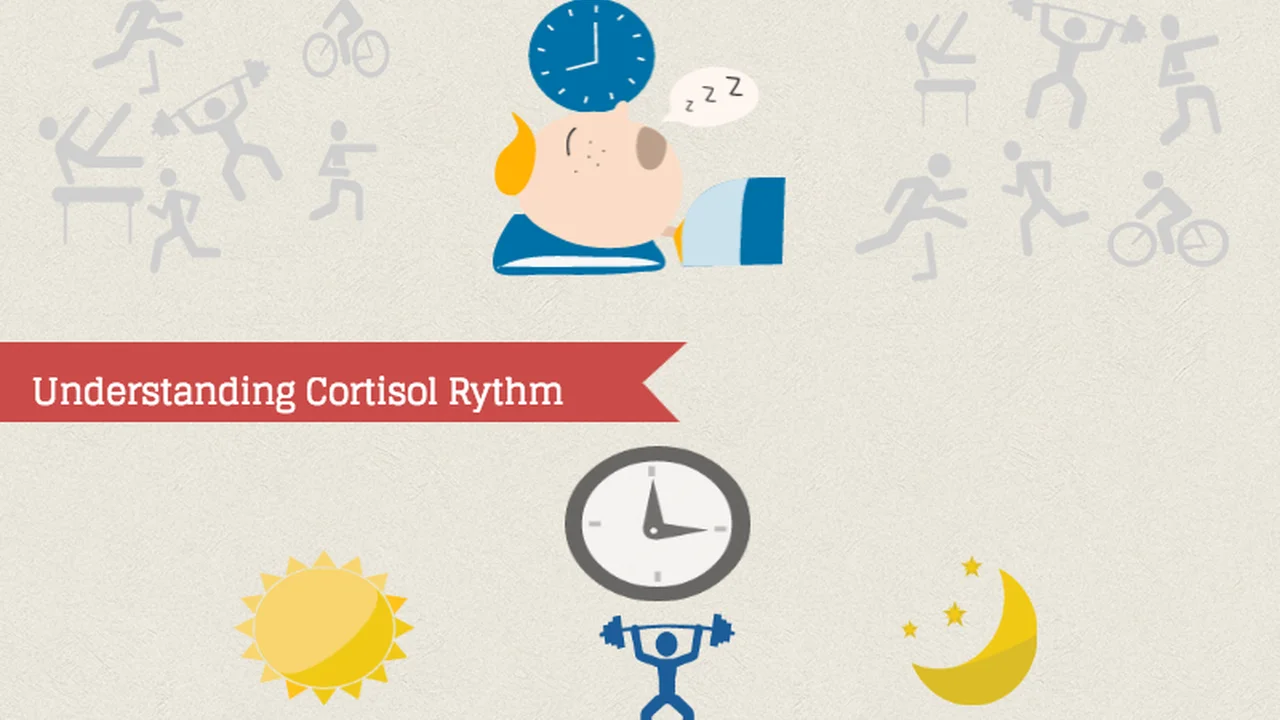7 Key Sleep Stages: What Happens While You Sleep?
Sample meta description.

Understanding Sleep Stages The Foundation of Restful Nights
Ever wondered what really goes on while you're catching those Zzz's? It's not just a blank screen of unconsciousness. Your body and brain are actually super busy, cycling through distinct sleep stages. Knowing these stages is key to understanding why sleep is so vital and how to optimize it. Think of it as the behind-the-scenes action of a nightly performance starring...you!
Stage 1 NREM The Transition to Sleep
Stage 1 Non-Rapid Eye Movement (NREM) is that drowsy period when you're drifting off. It's that in-between zone where you're not quite awake, but not fully asleep either. Your brain waves start to slow down from your daytime activity, and your muscles begin to relax. You might experience hypnic jerks – that sudden sensation of falling that jolts you awake. This stage usually lasts only a few minutes. It's easily disrupted, so a little noise or discomfort can pull you right back into wakefulness.
Stage 2 NREM Preparing for Deep Sleep
Stage 2 NREM is a bit deeper than Stage 1. Your heart rate and breathing slow down, and your body temperature drops. Brain waves continue to slow, with occasional bursts of rapid, rhythmic brain wave activity called sleep spindles. These spindles are thought to play a role in memory consolidation. You’re less likely to be disturbed in this stage compared to Stage 1. It's like your body is putting up a "do not disturb" sign, preparing for the deeper stages to come.
Stage 3 NREM Deep Sleep The Restorative Powerhouse
Stage 3 NREM, often referred to as slow-wave sleep or deep sleep, is where the real magic happens. This is the stage where your body repairs tissues, builds bone and muscle, and strengthens your immune system. Your brain waves are very slow, known as delta waves. It's difficult to wake someone in this stage, and if you do, they'll likely feel groggy and disoriented. This stage is crucial for feeling refreshed and energized in the morning. Think of it as your body's nightly repair shop, fixing everything while you're sound asleep.
Stage 4 NREM (Often Combined with Stage 3) The Deepest Sleep
While previously distinct, Stage 4 NREM is now often grouped with Stage 3 due to their similarities. This is the deepest stage of sleep, characterized by predominantly delta waves. It’s even harder to wake someone in this stage than in Stage 3. Bedwetting and sleepwalking are more likely to occur during this phase. Physiologically, it's very similar to Stage 3, with continued tissue repair, immune system strengthening, and energy restoration.
REM Sleep The Dream Stage
Rapid Eye Movement (REM) sleep is the stage where most dreaming occurs. Your brain activity resembles that of when you're awake, but your muscles are paralyzed – preventing you from acting out your dreams. Your eyes move rapidly behind your closed eyelids (hence the name). Heart rate and breathing become irregular. REM sleep is crucial for cognitive functions like memory consolidation, learning, and creativity. It’s a fascinating stage where your mind is highly active while your body is essentially "offline."
Sleep Cycle Duration Understanding the Flow
These stages don't happen in a linear progression. Instead, you cycle through them throughout the night. A typical sleep cycle lasts about 90-120 minutes. You usually start with NREM Stage 1, then move through Stages 2, 3 (and 4), and then back up to Stage 2 before entering REM sleep. The proportion of time spent in each stage changes throughout the night. Early in the night, you spend more time in deep sleep (Stages 3 and 4), while later in the night, you spend more time in REM sleep.
Factors Affecting Sleep Stages Optimize Your Rest
Several factors can influence your sleep stages, including age, lifestyle, and underlying health conditions. As you get older, you tend to spend less time in deep sleep. Alcohol, caffeine, and certain medications can also disrupt your sleep cycles. Sleep disorders like sleep apnea and insomnia can significantly alter the amount of time you spend in each stage. Creating a healthy sleep environment, practicing good sleep hygiene, and addressing any underlying health issues can help optimize your sleep stages.
Improving Sleep Quality The Right Products and Techniques
Want to improve the quality of your sleep and make the most of each sleep stage? Here are some product recommendations and tips:
Mattress Recommendations for Optimal Sleep Stages
A good mattress is crucial for comfortable and restorative sleep. Here are a few options:
Casper Original Mattress The Balanced Choice
The Casper Original is a popular choice known for its balanced support and comfort. It features a combination of memory foam and support foam, providing pressure relief and spinal alignment. It's a great all-around option for various sleep positions. Price: Around $1,295 for a Queen.
Usage Scenario: Ideal for individuals who want a comfortable and supportive mattress for everyday use. Suitable for back, stomach, and side sleepers.
Purple Mattress The Unique Grid Design
The Purple mattress stands out with its unique gel grid design. This grid provides pressure relief and allows for airflow, keeping you cool throughout the night. It's a good option for those who tend to sleep hot or who prefer a firmer feel. Price: Around $1,399 for a Queen.
Usage Scenario: Best for hot sleepers and those who prefer a firmer mattress with good support. Works well for all sleep positions.
Saatva Classic The Luxury Innerspring
The Saatva Classic is a luxury innerspring mattress that offers excellent support and durability. It features a coil-on-coil construction and a plush Euro pillow top. It's a great option for those who prefer the feel of a traditional innerspring mattress with added comfort. Price: Around $1,695 for a Queen.
Usage Scenario: Ideal for individuals who prefer a traditional innerspring feel with added comfort and support. Excellent for back and stomach sleepers.
Mattress Comparison Table
| Mattress | Type | Price (Queen) | Best For | Pros | Cons |
|---|---|---|---|---|---|
| Casper Original | Memory Foam Hybrid | $1,295 | All Sleep Positions | Balanced support, comfortable | May sleep slightly warm for some |
| Purple | Gel Grid | $1,399 | Hot Sleepers | Cooling, pressure relief | Unique feel may not be for everyone |
| Saatva Classic | Innerspring | $1,695 | Back & Stomach Sleepers | Excellent support, durable | More expensive |
Pillow Recommendations for Neck and Spine Alignment
A supportive pillow is essential for maintaining proper neck and spine alignment. Here are a couple of options:
Tempur-Pedic TEMPUR-Cloud Pillow The Memory Foam Classic
The Tempur-Pedic TEMPUR-Cloud Pillow is a classic memory foam pillow that conforms to your head and neck, providing personalized support. Price: Around $99.
Usage Scenario: Ideal for back and side sleepers who want a supportive and comfortable pillow.
Buckwheat Hull Pillow The Natural Choice
Buckwheat hull pillows are filled with buckwheat hulls, which conform to the shape of your head and neck. They're a good option for those who prefer a firmer pillow and want a natural alternative. Price: Around $70.
Usage Scenario: Suitable for side and back sleepers who prefer a firmer pillow with good support.
Sleep Trackers Monitoring Your Sleep Stages
Sleep trackers can help you monitor your sleep stages and identify patterns. Here are a few popular options:
Fitbit Sense The Comprehensive Tracker
The Fitbit Sense tracks your sleep stages, heart rate, and skin temperature. It also offers stress management features. Price: Around $299.
Usage Scenario: For people who want a comprehensive overview of their sleep and overall health.
Apple Watch Series 8 The Smartwatch Integration
The Apple Watch Series 8 tracks your sleep stages and offers sleep schedule features. It also integrates with other Apple health apps. Price: Around $399.
Usage Scenario: Ideal for Apple users who want seamless integration with their other devices.
Other Sleep Enhancing Products and Tips
- White Noise Machines: Create a consistent sound environment to block out distractions.
- Blackout Curtains: Ensure a dark room to promote melatonin production.
- Weighted Blankets: Provide a calming and comforting sensation.
- Sleep Masks: Block out light for deeper sleep.
- Relaxation Techniques: Practice meditation or deep breathing before bed.
By understanding your sleep stages and implementing these tips and product recommendations, you can significantly improve your sleep quality and wake up feeling refreshed and energized. Experiment and find what works best for you!
:max_bytes(150000):strip_icc()/277019-baked-pork-chops-with-cream-of-mushroom-soup-DDMFS-beauty-4x3-BG-7505-5762b731cf30447d9cbbbbbf387beafa.jpg)






